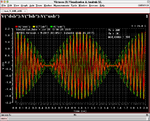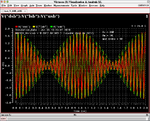pancho_hideboo
Advanced Member level 5
- Joined
- Oct 21, 2006
- Messages
- 2,847
- Helped
- 767
- Reputation
- 1,536
- Reaction score
- 733
- Trophy points
- 1,393
- Location
- Real Homeless
- Activity points
- 17,490
Attached figure shows RF-Waveforms in RFID.
DSB-ASK, SSB-ASK, PR-ASK.
PR-ASK is no more than BPSK with amplitude variation at symbol transition.
My questions are :
(1) What RF-Wavwform does show SSB-ASK ?
I don't think RF-Waveform of SSB-ASK is same as DSB-ASK.
(2) What advantage does have PR-ASK than DSB-ASK or SSB-ASK ?
It gives small required CNR than DSB-ASK or SSB-ASK ?
DSB-ASK, SSB-ASK, PR-ASK.
PR-ASK is no more than BPSK with amplitude variation at symbol transition.
My questions are :
(1) What RF-Wavwform does show SSB-ASK ?
I don't think RF-Waveform of SSB-ASK is same as DSB-ASK.
(2) What advantage does have PR-ASK than DSB-ASK or SSB-ASK ?
It gives small required CNR than DSB-ASK or SSB-ASK ?





